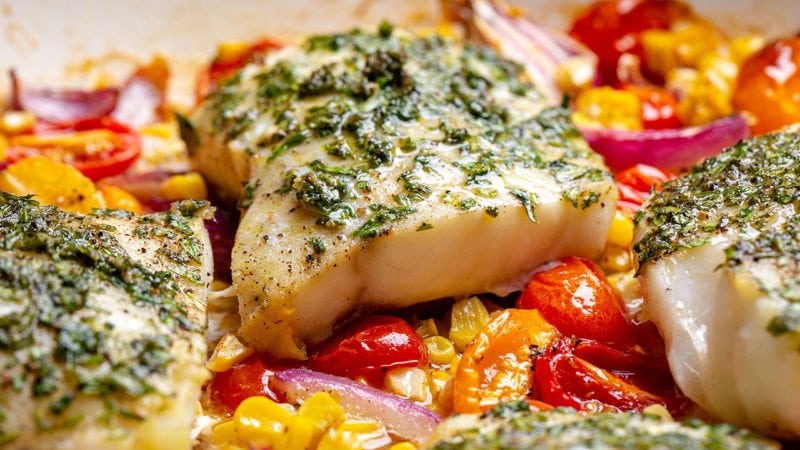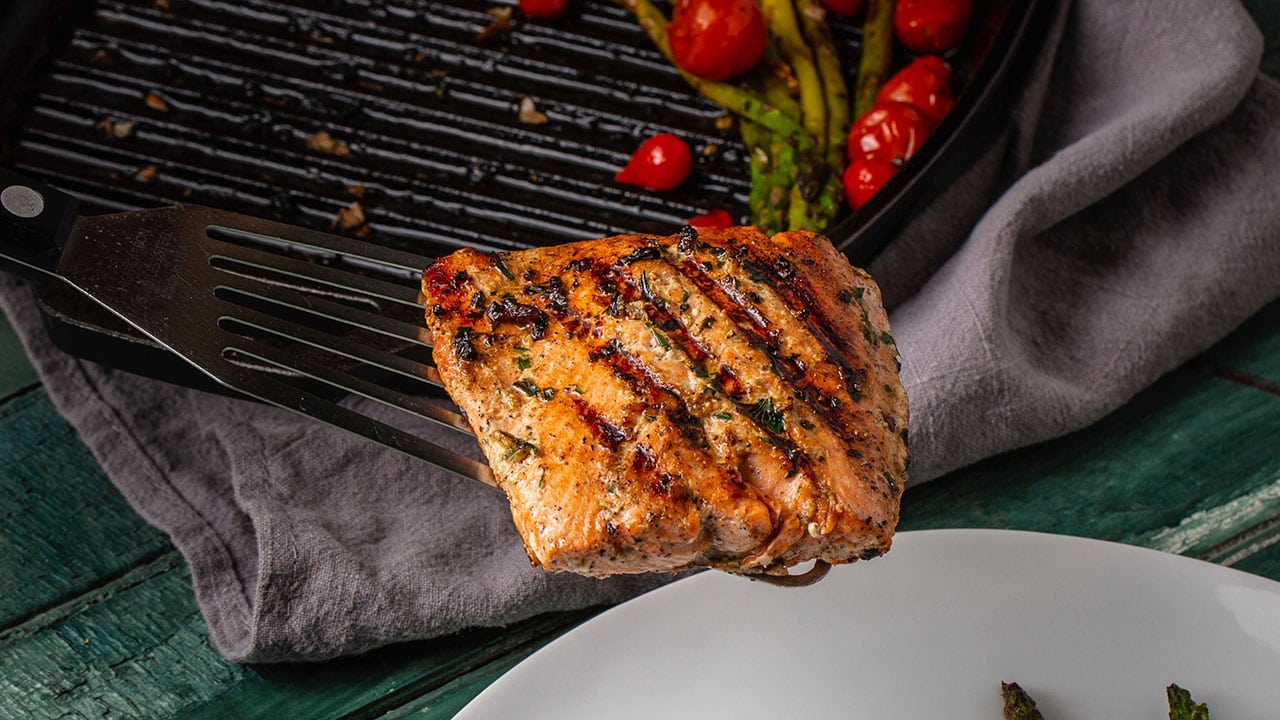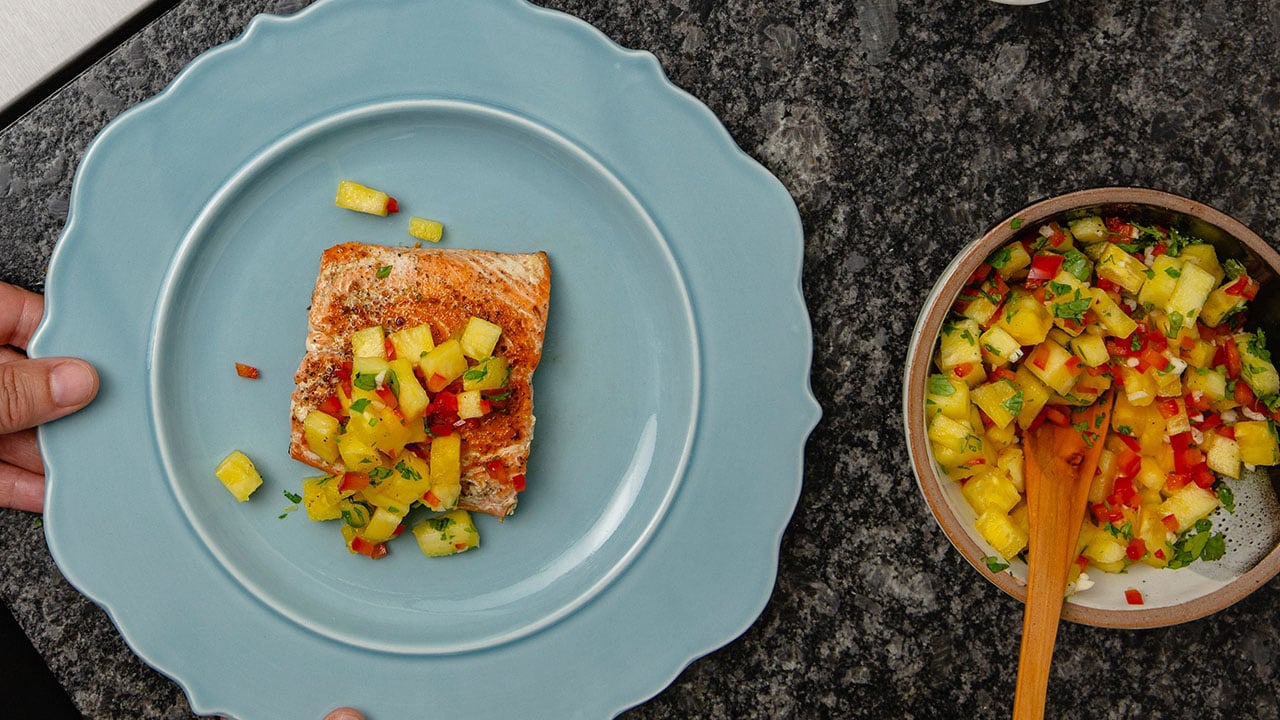Last Updated on April 27, 2021
When it comes to sustainable seafood, the information can be overwhelming. Which species should be avoided, what types of fishing gear are acceptable, is farmed fish okay? It’s a lot to consider—which is why we love wild-caught Alaskan seafood.
ButcherBox sources its sockeye salmon from Bristol Bay, Alaska—a pristine region north of the Alaskan peninsula. Because of the way the fishery is regulated, there are limited fishing permits issued, and the fishery only opens when the Alaska Department of Fish and Game has determined that the salmon’s spawning goals have been met each year.
The small fleet is controlled by owner-operators, most of whom catch the fish with gear called a drift gillnet – which causes minimal damage to the seabed, and in the case of the Alaskan salmon fishery, doesn’t pull up much bycatch (seabed damage and high bycatch are two indicators that a fishery needs to improve their methods).
Not to mention, the fish’s quality is spectacular—as anyone who’s received it in their ButcherBox can attest.
From a cooking and eating perspective, there’s almost no way to mess up wild-caught salmon—marbled with healthy fats and protected by its delicious skin, sockeye (one of five salmon species caught in Alaska) is excellent when cured, smoked, grilled, poached, roasted, and even lightly pickled.
Similarly, our Pacific cod, caught in the Gulf of Alaska, come from a well-managed fishery with tight catch limits which allow the cod populations to continue growing. This flaky white fish has a mild, savory flavor and is flexible enough to work in any number of dishes.
If you’re new to cooking fish at home, it can seem intimidating, but most seafood is actually simple and quick to cook—and these species are no different. Here are a few ideas for turning those beautiful wild-caught salmon and cod filets into something delicious to eat.
Grilled Salmon and Cod
Its firm flesh and higher fat content means that salmon takes well to the high heat and smoky flavors of the grill. Season the fish with salt, get the grill nice and hot, oil the grates lightly, and place the fish skin-side down. It’s so good it hardly needs more than a squeeze of lemon juice, but grilled salmon also plays well with any number of salsas and condiments, from a drizzle of miso-ginger dressing to pesto or compound butter.
Because cod has a finer flake, it can be trickier on the grill—the best way to do it is to place a cast-iron skillet over the grates and when it’s hot, swirl in some oil and add the seasoned fish. Boost its flavor with any number of ingredients—toss a few cherry tomatoes and some olives and white wine into the pan, or dust with a blend of turmeric, cumin, and salt.
Slow Roast Seafood
Fish is a quick-cooking protein, so even slow-roasting is not too much of a time commitment. Both cod and salmon work well in this recipe, which calls for cooking the fish for about 30 minutes in olive oil with a bunch of aromatics. The slow, low-temperature cooking in oil means that the fish remains super-silky and tender. Serve over rice with a bright, citrusy salad over the top.
Use It Up
Leftover cooked salmon or cod can be used in any number of ways.
Top of the list might be the fish cake—finely chop the salmon or cod and mix it with breadcrumbs, herbs, and egg; then pan-fry and serve with a salad for lunch. Or try flakes of cooked salmon in a cold pasta salad with ricotta, peas, and lemon juice; use the chunks of fish in fish tacos, or in salads or grain bowls.
However you decide to revive it, cooked fish has a short lifespan, so use it up within a day or two.
Leigh Belanger is a writer, editor, and culinary expert with a passion for food, storytelling, and sustainability. As an Editorial Director for ButcherBox, she has crafted engaging content that highlights high-quality ingredients, delicious recipes, and the joy of home cooking. Through her work, Leigh inspires people to cook thoughtfully and creatively.





